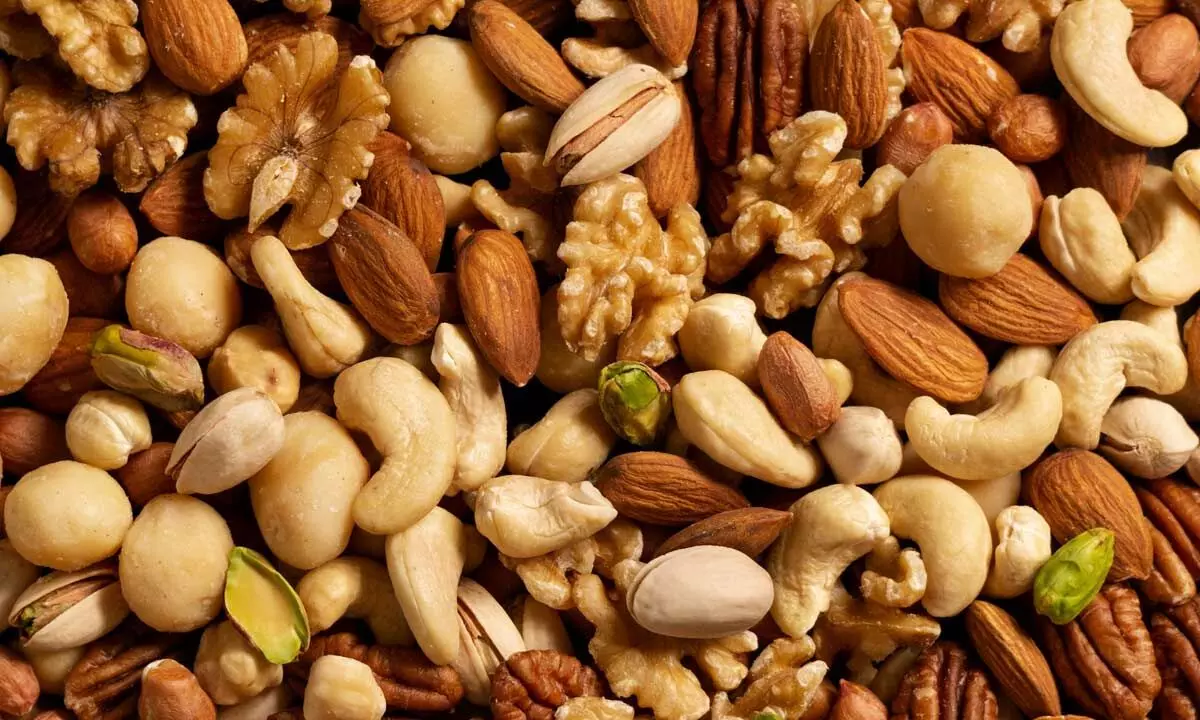Has the Indian consumption of nuts and dry fruits grown as much as the West ?

Rising health consciousness, purchasing power, and wellness trends amongst people have been primary factors driving the phenomenal increase in the demand for nuts and dry fruits in India.
Rising health consciousness, purchasing power, and wellness trends amongst people have been primary factors driving the phenomenal increase in the demand for nuts and dry fruits in India. According to DP Jhawar, CEO & MD Proventus Agrocom Limited & ProV Foods, some of the significant gains are likely to be realised in the industry from economic development, demographics, and dietary change. So much so that even Farmers, Growers and Exporters from around the globe are focussing their attention to exporting to countries such as India where demand is soaring ,by surfing on trends like veganism and growth of e-commerce, as compared to the relatively saturated slow growing markets of the west
Traditionally, nuts and dry fruits in India have been popular primarily as an integral part of exquisite gift hampers we exchange during festivals, or even as ingredients in the different cuisines around the country. Although nuts and dry fruits have been entrenched in our culture, their overall consumption within the country, although robust, has lagged behind that of the West in terms of growth for a multitude of reasons.
Firstly, while nuts and dry fruits have always held a cultural significance in India, they have primarily been perceived as luxury items rather than daily staples. On the other hand, in Western countries , nuts and dry fruits are a part of daily life , integrated into their everyday diets and snacking habits as an effort to lead a health-conscious lifestyle. Secondly, economic patterns play a crucial role in shaping consumer matters in India. To that effect, there is a significant portion of the Indian population for whom nuts and dry fruits remain relatively expensive indulgences. On the contrary, the people in the Western world – where the incomes are higher and the purchasing powers are greater - are able to proportion a larger amount of their wallet towards the relatively more expensive new age staple of nuts and dry fruits.
Lastly, India’s expansive geographical landscape has previously presented significant infrastructure and distribution challenges especially for the food sector – an aspect that is significantly more developed in the West. While urban centres in India have easy access to a wide variety of nuts and dry fruits in the form of supermarkets and novelty stores, rural areas often face limited options, stale stock and higher prices due to logistical constraints. This lack of ‘reach’ has limited the growth of the nuts sector among others due to sheer lack of products getting to untouched demand hubs within the interiors of the country.
Although these factors have limited the speed of growth of the Nuts & dry fruits markets in India until recently, a dramatic shifting of gears has been seen in the ove the last few years with an increasing consumer preference for healthier snacking options, an increase in purchasing power, rapid growth with a Pan-India reach of e-commerce channels and growing awareness of plant-based diets, among others. This growth is more evident when we look at numbers depicting the growth rate of the industry within the country
India's overall nuts and dry fruit market had been experiencing a steady 10-12 percent compounded annual growth rate (CAGR) even before the pandemic. However, the post-pandemic period has witnessed a surge in demand for healthy snacking options, leading to increased interest in the market. Consumption of dry fruits and nuts has increased by 25% in 2023, the most in five years, as more and more people turned to these rich sources of minerals and vitamins, known to improve immunity.
This growth is most evident in the most popular Nut – the Almond. Almond consumption has grown with more Indians identifying eating the nutrient-rich crunchy nut packed with protein, fibre, Vitamin E and antioxidants with a healthy lifestyle. According to figures from the Ministry of commerce and Industry, almond imports totalled $531.06 million during the April-October 23 period, or the first seven months of this fiscal year. Traders predict imports in fiscal 2024 to significantly surpass the FY23 figure of $1.01 billion. Before the pandemic, in FY20, almond imports had totalled $874.67 million.
Today, India ranks second in terms of consumption for popular dry fruits like peanuts, almonds, and cashews. The country holds the third position for raisins, fourth for dried figs, sixth for walnuts, and seventh for dates. These statistics demonstrate the significant appetite for dry fruits among Indian consumers, opening up avenues for innovation and market expansion.
However, even with these eye-catching statistics, the Indian nuts and dry fruits markets are yet to catch up to western markets, with the American industry alone being valued at USD 18.13 billion, and is projected to grow with a CAGR of 3.74% from 2024-2030. The scale of developed markets further Shows that a massive headroom for growth exists for the Indian Nuts and Dry fruits markets.
Going forward, a focus on certain aspects of market development can help the Indian Market capture a larger chunk of the global nuts & dry fruits market . Factors such as the rise of plant-based diets and veganism, driven by environmental and health concerns, with people looking for alternatives to animal-based products, naturally turning to nuts and dry fruits as healthy snacking options, nutrient-dense foods, and alternatives to dairy products – will definitely bolster demand. Further, the e-commerce boom has presented us with the ability to reach consumers on an unprecedented scale, throughout both urban and rural settings. Customers can now browse through, and purchase products from the convenience of their own homes, eliminating distribution costs and expanding the market reach. Lastly the growing purchasing power and the infrastructure growth pushing the reach of the offline retail channels are further bound to make the Indian consumer integrate nuts and dry fruits based products into their everyday diet
Possessing a strong foundation, and coupled with ever-increasing prospects, the future of the Indian dry fruits and nuts industry shines brilliantly.
(The author is CEO & MD Proventus Agrocom Limited & ProV Foods)



















